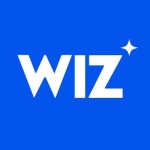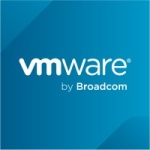What is our primary use case?
We evaluated Calm primarily as an automation platform because that's what it is. I work for a service provider and we represent a lot of customers.
Our journey with Calm started because we wanted to decentralize our platform of services to customers, because agility is one of the biggest concerns. As a service provider, we have very rigid practices because we follow ITIL processes. If we're managing a customer's environment, we need to have controls. The unfortunate reality of controls is that they add rigidity, and that works in contrast to the agility of cloud where customers want to be able to adopt and migrate and move quickly, based on their businesses needs.
We're developing Calm in a way where we give customers choice and flexibility, so that we don't have to consume workloads for them. We give them Marketplace, and part of Marketplace is that we publish open source applications, as well as managed applications and unmanaged applications. These applications could be as simple as a stack of load balancers, middleware, and database. Or it could just be an operating system. It's really the customer's choice. We've given them a platform, similar to the way public cloud providers do, a marketplace where they can go consume, but in our marketplace, that consumption can be on their platform. We provide a shared platform like a public cloud, and the hyperscalers, so they can consume it in Amazon and Microsoft Azure as well.
Part of our journey with Calm was that we wanted to speed the process up, but at the same time, have a standard catalog in that process, and let that catalog evolve with our customer feedback.
In our organization, we are both a partner, a service provider, and reseller of Nutanix. We have a very strong relationship with them. We have adopted Nutanix as a standard for our service provider cloud, which is located in five data centers in the central United States. In these environments, we have deployed Nutanix for our own services and shared services, and we are also selling private cloud, based on the Nutanix platform, to our customers. With these deployments, we are standardizing on Calm as a centralized management marketplace. So it's doing a couple of things. It's letting customers consume against their own platform, and it's allowing customers the access to be able to consume hyperscale and/or our shared platform if they choose to do so.
Our journey, right now, is balancing between managing operating systems and our managed service practice for our customers. We're trying to automate that managed service practice with Calm and their blueprints and the openness of scripting that they support, so that we can automate adding an application, an operating system, from our catalog. It goes through an ITIL process of creating a customer asset in our service library. It grabs values of that asset—naming conventions, components of the infrastructure, et cetera—and puts them into the customer's asset library.
These are all bits of underlying automation that you normally wouldn't necessarily have to do, but as a managed product we do so on behalf of the customer for inventory purposes. And that's just one aspect, what a managed platform does. The other aspect is an unmanaged platform. A customer can say, "I want to do 10 things and I'm managing them myself, and I'm going to probably destroy them when I'm done." We wanted that ubiquitousness, so a customer can choose whether they want something managed by us or managed by them, but where we keep the experience for doing so the same. It's a standard journey instead of their having to open a ticket and request something and then wait for a period of time for it to be executed. We're trying to remove ourselves as friction.
Our use case for Calm has been wrapped around giving customers a marketplace to standardize their experience and to determine what the components of that standardization are, which includes workloads that we manage, workloads that the customer manages, and those two scenarios can be on their private cloud, our shared platform, or the hyperscalers.
How has it helped my organization?
The beauty of the Calm platform is that it's really an open platform so you're not locked into a language that you're forcing developers and your team to use. We're working on enabling a DevOps journey inside of our company where we're not forcing people to adopt a tool and use a framework that they're not familiar with. We're allowing Microsoft people to use PowerShell. We're allowing our Linux teams to use shell scripts and Python. They have their choices. It's also allowing other components, like JSON. Our DevOps team that uses Terraform and other technologies uses JSON as a component for infrastructure automation. Blueprints allow all of that functionality.
You can also create a library of these scripts so that other team members can use what you've already developed to help speed and accelerate the automation journey. That is the next step for us. We're getting all this source that is very decentralized today—where people write their scripts, they store them, and they're not really a shared platform—and we're using Calm as a mechanism to bring it all together. The next step will be to integrate Calm with our source library and CI/CD pipeline. That is a forward-looking statement. Those are things we're working on. The DNA within our company, historically, wasn't as a software development shop, but we're transforming that now and using Calm as a mechanism to get there.
We have long-time customers, and our method of managing their workloads has been very traditional. When a request comes in, we go through a process of provisioning and deploying that request. We've enabled Calm on their platforms, so when a request comes in, one of our engineers executes the request, but instead of manually pulling triggers for the customer, to execute that request we now use Calm to deploy the customer's request and allow the automation to do the rest. We have scenarios with some customers where we are completely hands-off. They come to us and they say, "I want 10 of these and 20 of those." We execute that request for them using Calm, but that experience is somewhere on an order of magnitude of a fraction of the time that they used to have to wait previously, to have that request delivered.
In addition, by using Calm, we have the ability to keep these blueprints and images up to date. Previously, we had an automation process that built these images but they were constantly having to go through a management lifecycle. With Calm, we have been able to streamline that lifecycle so that what we're providing our customers is really the latest and the greatest.
Calm's abilities, in terms of team collaboration, come out in our standard marketplace or platform where teams are using the same experience. It's the same UI, so they're able to talk through their experience and talk through what they run into. We're using some of the functions of Calm to build project teams so they have the same access level and the same control. They're sharing the platform together. That gives them the ability to collaborate better across the platform.
And Calm is an HTML5 interface. It's all web-based applications at this point. Given what's happened over the last 12 months [as a result of COVID-19] and that everyone is remote, it's a lot easier to collaborate because it is all HTML5 and web-based. Our teams don't have to worry about legacy tools and applications to try to work together. From that perspective, we haven't really lost time in the journey because of all the recent events. We've been able to keep on working and keep on moving things forward.
In terms of Calm's ability to optimize, the analogy we use is a T-shirt because we have an extra small, a small, a medium, and a large. Those are really just subsets of components of the underlying infrastructure: this many CPUs, that much memory, this much storage. We use that to catalog our resources. The beauty of that catalog that we're building is that it is consumed against an infrastructure. By "T-shirting" these consumption models, we're able to maximize the available capacity of the environment that these workloads are sitting on. By contrast, when you randomly consume, which was typical in the "old days" where you would manually provision something, you provisioned them to non-standard tiers of infrastructure. That meant you were not consuming a platform linearly and that you were usually under-consuming something. You would make an investment and not maximize the output of that investment. By standardizing our "T-shirts" with Calm, we have also standardized the infrastructure that things are consumed against. So when our customers invest thousands of dollars on both infrastructure and tools with us, we allow them to get the maximum utility of that infrastructure investment, by using Calm as a mechanism to consume against it.
When it comes to application development and deployment, we have a series of management tools that we provide to our customers but those tools have a backend. We're trying to build automation into those tools so that they can be deployed and distributed automatically. We're using Calm to centralize and deploy those scripts automatically, in a distributed way, down to customers' private clouds and other environments. The intent is to build an application catalog with our customers so they can consume against it, using the Nutanix Marketplace to purchase those applications, very similar to what Amazon and Microsoft marketplaces are like. We're easily seeing a 20 percent improvement, and probably more, in that application development. That's a conservative number.
Calm is also transforming the way we QA and operate—the whole nine yards. Our process for delivering an application, an environment, goes through what we call a readiness exercise, a validation exercise. In the software world you would call it an SDLC stack where you go through dev, test, UAT, and release. That can be a very static and manual process, and it's very hands-on. What we're doing with Calm is transforming the process. We're saying, "Well, instead of manually doing the exercise, why don't we build triggers in our automation so that we can validate whether things are working properly or not along the way." We're making it a continuous validation process and an automated validation process. We're going through that journey right now, but when it ends, in all likelihood it will cut our validation time in half. We probably spend half our time validating an environment before we hand it over. If we automate that validation, we don't have to actually spend time doing it. Currently we spend time meeting with teams to do acceptance of our validation. So all that time will be freed up because we won't need a meeting to talk about validation.
Overall, we've gone from deploying workloads in 45 minutes or 90 minutes and we've taken that down, in some cases, to seven minutes.
What is most valuable?
The greatness of the Calm platform is that it removes itself, in a sense, so it's unknown to many people. It's a marketplace. You consume resources. If you design it properly, it obfuscates itself. Part of our challenge in the journey working with customers is to have them understand that that is what you want. You want it to be simple. But usually making something simple on one side is fairly hard to do on the other.
We use Calm's one-click self-service feature and it's really transforming the team's efficiency. The teams are used to being reactive, which is typical of what you find in IT organizations and service providers. Customers run into problems and teams react. What we're trying to do is reduce that slope and be more proactive in approach. The one-click ability is enabling us to take some of those activities and put them into operation, versus people manually responding.
What needs improvement?
We have a very close relationship with Nutanix and I have a very close relationship with the Calm team. I've given them a lot of feedback around multi-tenancy. Because we're a service provider, multi-tenancy is a big deal.
Another aspect is that, while there are multiple clouds supported, we want less friction around the ease of delivery. We want the ability to integrate other clouds, unify the accounts.
Identity access management or IdP are other areas we've talked to Nutanix about, to move toward more of an identity access model, not just with the ability to use IdP to authenticate, but to also attach our back controls to the IdP so that we can have that centralized and decentralized model with customers.
And we want the marketplace and the blueprints to be a little bit more "brandable," for lack of a better word. This is really a service provider play, but we want the ability to make that a little bit more brandable so that we can scale that marketplace. We want it to be easy to determine which cloud you're selecting when you're picking something from the marketplace to consume.
We also want to show cost to the customer. We want a model that says, "Well, if you consume that, this is approximately what it's going to cost you, depending on where you consume it, which cloud you're consuming it in."
For how long have I used the solution?
I've been using Nutanix Calm for about two years now. We evaluated it just over two years ago. I was familiar with it in its early stages.
What do I think about the stability of the solution?
We haven't had any issues with Calm. Nutanix is really embracing that reference architecture within other aspects of its core applications. Calm is a containerized application that Nutanix deploys within their platform.
What do I think about the scalability of the solution?
Calm has the ability to autoscale resources, so that if you need to scale up a resource, you can build those mechanics into your blueprints. We're consuming that ability internally, for testing purposes. We've talked to our customers about that and we're going to introduce it to them as that agility becomes reality.
The challenge is whether their applications have that "breathability" or not, and whether they are familiar with that. We want to be careful on the autoscaling aspects for customers because not all customers have web-scale applications. A lot of them have traditional applications. But we're definitely adding that to our subset of tools and resources so that there's an automation lifecycle with the ability to scale out a resource. Calm definitely has that capability and we've been using it for a while ourselves, evaluating and testing it. We're trying to work that into our discussion with our customers.
Overall, Calm is highly scalable and we haven't had any performance issues with it. The specifications numbers are in the specs, but we haven't hit anywhere near that. Those tolerance ranges are fairly significant. If you were to ask me about this a year from now, I might say that we will hit some scalability issues based on adoption. The good news with Nutanix is that they're constantly looking at this stuff as well. We're in constant communication with them about the platform.
The people in our organization using Calm include our DevOps team, our "high-end" engineers on both Windows and Linux, and our architecture team. That's roughly 20 people who are using Calm or developing within it. Those teams also work with customers against the Calm platform. We're now working on the next half of the journey, which is to bring the rest of the company along, extend our product catalog with Calm, and to start showcasing it to customers.
How are customer service and technical support?
Nutanix technical support is a top-notch team. It's really one of the best experiences we have had and that I've personally had. When we call into Nutanix, their SREs are just phenomenal. Their discipline is absolutely amazing. We can get through escalation if we need to and get to a team, whether that's Calm or any other team, in a very short period of time. And that extends, for us, into their product team, into their engineers, or their QA if we need to.
It's an amazing experience to go through with Nutanix. Their knowledge is phenomenal. Their agility is phenomenal.
And with the Nutanix platform, they have the ability to see everything remotely as well, through logs. The platform uses a tool called Pulse which collects all the background information. It's a follow-the-sun approach, depending on what you need and what your escalation is. They can hand that ball around across the globe to get you to your result.
It's not that you'd ever want to have to call in to support for a problem, but with the way they have built the platform and the great team they have built, if you do have to call in, you can really feel comfortable that they're going to get you to where you need to be and they're going to get you there quickly.
Which solution did I use previously and why did I switch?
Before Calm we tried many solutions. At some point tried Morpheus. That was prior to my joining our company, although I had previous experience with Morpheus. One of the challenges with Morpheus were some of the core things we have talked about. It was a completely independent platform. We had some API issues with it, as a service provider, and it didn't necessarily accelerate our journey. It unified things, because it was one interface, but the core, underlying infrastructure pieces weren't necessarily transformed as a result of it. While the experience became unified, it still took 30 minutes or 45 minutes or an hour to get something deployed. Whereas Calm now sits on top of a whole new ecosystem and that ecosystem has transformed a lot of things.
We played with the VMware tools for a period of time, but those are expensive tools. It was very expensive to adopt that platform. We were trying to figure out the best mechanics for accelerating the platform without adding too much cost. That's when we started our Nutanix journey.
How was the initial setup?
Nutanix makes the deployment easy, just like everything else that they have in their software stack. It's a very simple deployment model. It's part of the Nutanix software tool chain.
We have a combination of a uniform implementation strategy for Calm and taking different customers' requirements into account. We work with our customers to get feedback. We've started with a baseline of operating systems, primarily, because most of our customers are still in the traditional consumption model. And we're complementing that based on their feedback. We're also working with Nutanix because Nutanix has a large customer base as well. We've just really started that journey.
What about the implementation team?
When we adopted the platform, we engaged Nutanix's services team so we could accelerate our journey with them. We had nothing but a great experience with them and their team. We were able to get Calm and core components of the platform up fairly quickly and get base applications going.
Now we're taking that framework and applying the aspects of our business to it.
What was our ROI?
The biggest thing with Calm is that it has helped to fill a hole in our journey: How we were going to automate across all these different environments in the cloud, and without necessarily having to go build and develop a platform.
What's my experience with pricing, setup cost, and licensing?
We're a service provider with a very strong relationship with Nutanix. We have multiple mechanisms of licensing Calm. From our perspective, the pricing is flexible and it's also unique. As a service provider, we can talk to Nutanix at a different level around how we license Calm.
You typically license Calm against your environment or you can license it by the workload. That makes a lot of sense, because workloads can live within your private cloud or the public cloud, it makes no difference. With any deal with Nutanix, they provide a certain number of seats with your purchase. So you get to use it from day one. I believe you get 25 seats with a purchase. There's nothing stopping you from embracing the journey because you've already paid for it.
What other advice do I have?
My advice would be patience. It's very exciting and sometimes you want to jump in with both feet and go really fast. It's not that I'm against that, but my take is that it's such a capable platform that you should take on things that you can achieve and then achieve them. Take on activities that you can succeed with and show that incremental progress. Sometimes you want to take on too much and go big-bang. As enticing as that is, take on pieces of Calm and succeed with them, and let the platform evolve. Don't try to wholesale adopt it too fast. If you're more traditional in nature and you're doing typical project management, your windows could be big. Those steps up can be huge. So you want to make sure you show some incremental progress.
There's a plethora of automation tools out there as well as methods for how you build automation. Most of these platforms are frameworks and you have to build your own methods and use your own sets of tools. And when you're a service provider, and I think this would apply to the enterprise, cloud is an ubiquitous platform. In today's world, cloud is a ubiquitous term where companies don't necessarily look at just a cloud. They look at a cloud ubiquitously, because while you have three or four major hyperscale cloud-platform providers, they all have their different sets of software-based tools. In some cases, one cloud does certain things really well, while other clouds do other things that are better.
Limiting yourself and your business to one cloud might not be your best choice. And that has historically been the case in a lot of companies' journeys, but that situation is now evolving. Now, you don't just look at one cloud. Suppose you're a company that is heavily invested in Microsoft solutions. There are certain aspects of Microsoft, either your technology or your financial investments, which behoove you to use Microsoft Azure because it's beneficial to you. But there are certain things in the lifecycle of your software development where Amazon might be a better fit for certain aspects of what you do. In today's world, companies are evolving and they're open to the flexibility.
In that scenario, how do you decide your tool chain? How do you decide to invest in the use of tools from one platform provider or the other? Part of that assessment is cost and this is where Calm comes in because, as a lifecycle automation manager, it doesn't care which cloud you provision. You have choices. And the good news is that you control your source. So you don't have to use the tool set that Microsoft provides and then try to automate into Amazon from it, or vice-versa. You can try to develop those tools to automate by yourself, and a lot of large companies have made that significant investment in software—both in resources as well as capital. But these are platforms that consist of a lot of tools which have costs wrapped around them. The beauty of Calm is that it gives you your choice. Nutanix uses the expression "freedom of choice." That's really the conclusion we've come to, as a service provider. Part of what we want to do is give our customers choices. We want to help them along their journeys and help them make good choices, both technical and financial. And of course, those two pieces work off of each other.
Calm's support for scripts is a tale with two stories. First, it's exposing the scripts to a lot of people within the team. They can now use the same sets of scripts and augment them to do a specific function, versus starting from scratch. It may save them from having to research something. We have a library of these scripts that we're building.
Second, it's a step back before it's a step forward, because the team members have to get familiarized with this mechanism and with the delivery blueprint. We're ramping things up to get everyone slowly trained on the platform and to get them used to the platform, and that takes time. The mechanism of delivering the scripts is different from what they're familiar with. We're probably 10 percent into that journey. We've got a core team that has been working in it. Now, we're trying to extend that across other areas of the organization. Once we get everyone to participate and get a standardized library of scripts, we will see a very significant reduction in time. We'll see the agility of building applications a lot faster.
What Calm has done for us is it's enabled the rigidity to be lifted. We're looking at a lot of different ways of changing things. It's a transformative tool. If you embrace it and adopt it properly, it opens the door to developing a life cycle process and the tools to use around Calm in terms of a repository and pipelining. Calm is also bringing us to discuss mutable and immutable infrastructure. Do we need to use tools like Puppet or Chef as a version control? Or, now that we have Calm, and we can strip out an application-ware or a middleware or something else, and start moving into a quasi microservices journey, does that infrastructure now become more mutable, where you can just destroy it and recreate it? Why try to save its configuration?
These are core topics, and they are big. It's traditional and nontraditional. This is a journey that Calm enables. If you embrace it, a lot of things become transformative with it. When you look at all those things, in many cases, you have to take a couple of steps back. But can you embrace Calm and do a lot of things right upfront? Of course you can. How quickly depends on your company size. We have a fairly large organization and we have a lot of customers, so we have to think of all those moving parts in embracing the journey. The good news with us is that we're going to be able to extend Calm to a lot of our customers. Calm will be a platform that a lot of customers will be able to use and embrace.
It's a great platform and I would rate it at eight out 10. The difference between eight and a nine is in the different things that we're asking for as a service provider. An enterprise or a commercial business might look at it slightly differently, but for me eight is a great score. It's a score I don't usually give out. Calm is a great team. They have developed a great platform and it's continuously improving. I look forward to seeing a lot of people adopt it.
Disclosure: PeerSpot contacted the reviewer to collect the review and to validate authenticity. The reviewer was referred by the vendor, but the review is not subject to editing or approval by the vendor. The reviewer's company has a business relationship with this vendor other than being a customer: Partner/Reseller/Service Provider

















